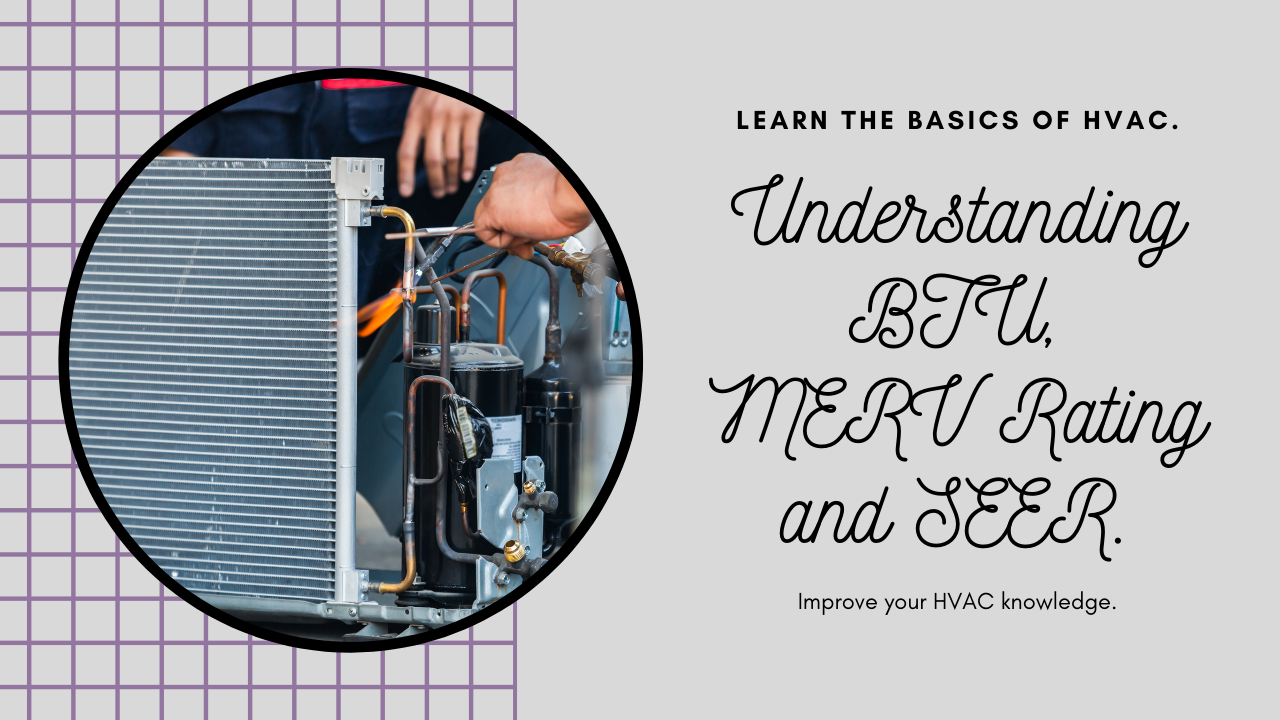
When it comes to HVAC systems, including Tradewind HVAC, there are several common terms and concepts that can be confusing for homeowners. Understanding these basics is essential for making informed decisions about your heating and cooling needs. In this article, we will demystify terms like BTU, MERV rating, and SEER, and explore how they relate to energy-efficient HVAC systems in Brea, California.
The Benefits of Energy-Efficient HVAC Systems
Before delving into the specifics, it’s important to understand the advantages of energy-efficient HVAC systems. These systems are designed to optimize energy consumption while providing superior comfort and air quality. Here are some key benefits:
- Reduced Energy Costs: Energy-efficient HVAC systems consume less energy, resulting in lower utility bills.
- Environmental Sustainability: By using less energy, these systems help reduce greenhouse gas emissions, contributing to a cleaner and greener environment.
- Enhanced Comfort: Energy-efficient systems provide consistent temperature control, improved humidity regulation, and better air distribution, ensuring optimal comfort throughout your home.
- Better Indoor Air Quality: These systems are equipped with advanced filtration and ventilation features, effectively removing pollutants, allergens, and other contaminants from the air you breathe.
Understanding BTU (British Thermal Unit)
BTU, or British Thermal Unit, is a measurement used to quantify the amount of thermal energy required to raise the temperature of one pound of water by one degree Fahrenheit. In the context of HVAC systems, BTU is used to determine the heating or cooling capacity of a unit.
When choosing an HVAC system for your Brea home, it’s crucial to consider the BTU rating that aligns with your specific needs. A system with too low of a BTU rating may struggle to adequately heat or cool your space, while a system with too high of a BTU rating may result in inefficient operation and unnecessary energy consumption.
Understanding MERV (Minimum Efficiency Reporting Value) Rating
MERV, or Minimum Efficiency Reporting Value, is a rating system that measures the effectiveness of an HVAC system’s air filter in removing airborne particles. The MERV rating ranges from 1 to 20, with a higher rating indicating a more efficient filter.
When it comes to indoor air quality, a higher MERV rating is generally desirable as it means the filter can capture smaller particles, including dust, pollen, pet dander, and bacteria. However, it’s important to note that a higher MERV rating also means a higher resistance to airflow, which can impact the overall performance of your HVAC system. It’s essential to find a balance between filtration efficiency and system airflow when selecting an air filter for your Brea home.
Understanding SEER (Seasonal Energy Efficiency Ratio)
SEER, or Seasonal Energy Efficiency Ratio, is a measure of an HVAC system’s cooling efficiency over an entire cooling season. It is calculated by dividing the total cooling output (in BTUs) by the total electrical energy input (in watt-hours) during the same period.
A higher SEER rating indicates a more energy-efficient system, as it can provide the same level of cooling while consuming less electricity. In Brea, where summers can be hot, choosing an HVAC system with a high SEER rating can lead to significant energy savings and lower cooling costs.
Choosing the Right HVAC System for Your Brea Home
Now that you have a better understanding of these HVAC basics, it’s important to consider them when selecting an HVAC system for your Brea home. Tradewind HVAC, a trusted HVAC company in Brea, offers a range of services including HVAC installation, furnace repair, furnace installation, furnace maintenance, and furnace replacement.
When it comes to energy-efficient HVAC systems, Tradewind HVAC can guide you through the selection process, taking into account factors such as the size of your home, insulation levels, and your specific heating and cooling needs. They can help you choose a system with the appropriate BTU rating, MERV rating, and SEER rating to ensure optimal comfort, energy efficiency, and indoor air quality.
Conclusion
Understanding HVAC basics such as BTU, MERV rating, and SEER is essential for making informed decisions about your heating and cooling needs in Brea, California. Energy-efficient HVAC systems offer numerous benefits, including reduced energy costs, environmental sustainability, enhanced comfort, and improved indoor air quality.
Contact Tradewind HVAC, a reputable company that specializes in HVAC installation, furnace repair, furnace installation, furnace maintenance, and furnace replacement. With their expertise, you can ensure that your HVAC system meets your specific requirements and provides optimal performance and energy efficiency.
